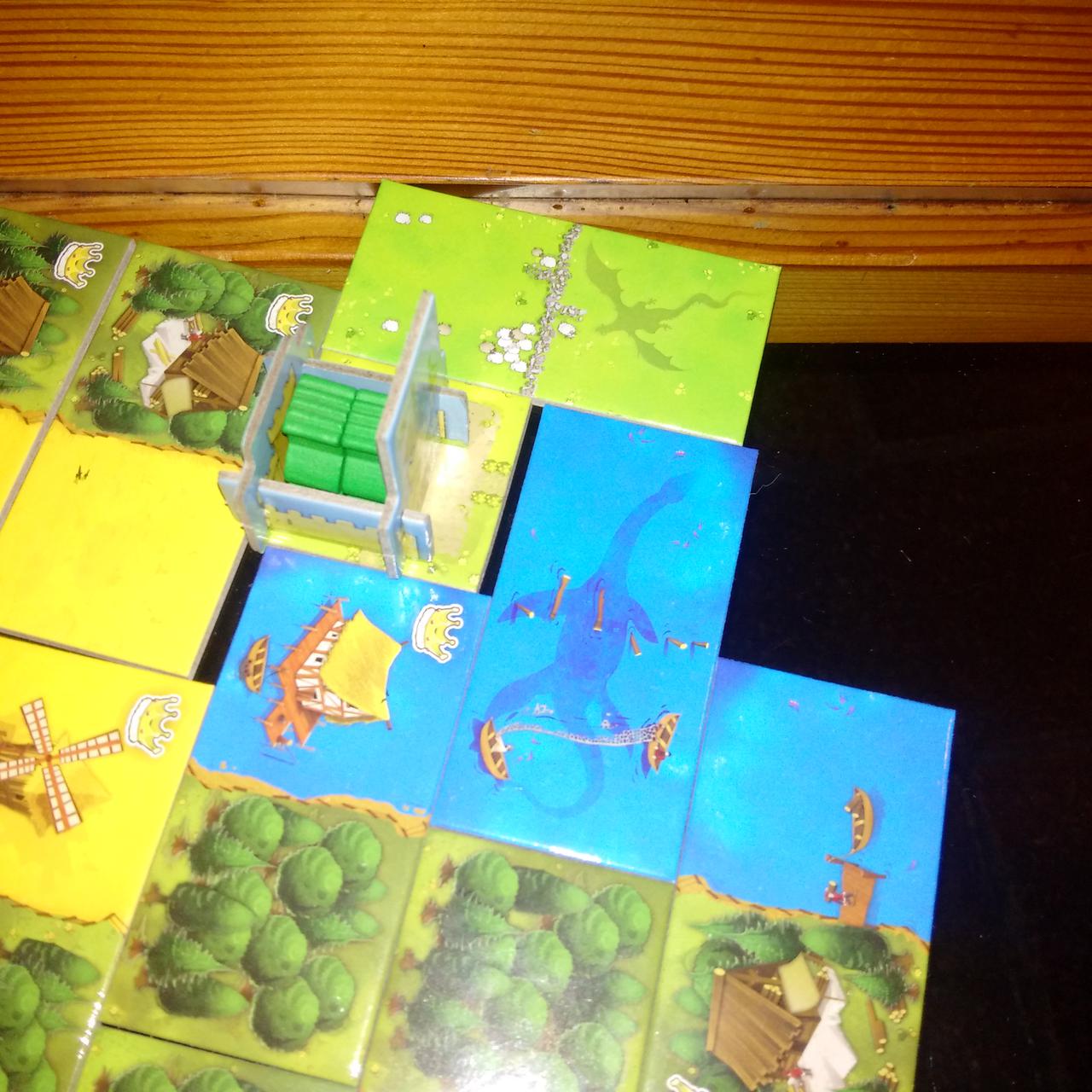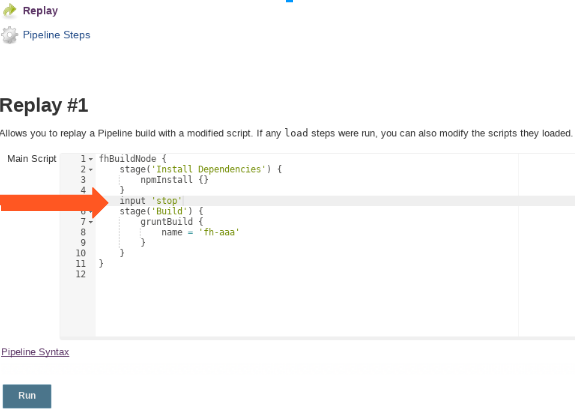Playing Kingdomino with a 3 year old
What is Kingdomino?
I have recently discovered a really nice board-game. Well, discovered might be a strong word, it has won Spiel des Yahres for 2017, so it is pretty well known by now. It is a simple game, might take me and my wife around half an hour to play a round and we can manage the rules even when exhausted after the day is over and before we go to bed.

I think a professional might do a better job of explaining the rules than me, but for the purposes of this, lets summarize the two-player rule-set:
- you have 24 rectangle tiles, resembling dominoes, split in half to two square regions
- on the back of the tiles you have a number, higher the number implies more valuable tile
- region might be a field, a pasture, a forest, a lake, a swamp or a gold mine
- in the region, there might be a house, containing 1, 2 or 3 crowns.
- Each player has a square tile with a castle and two king-shaped meeples
- play consists of 6 rounds where each player has two turns to choose new tiles for his kingdom
- before you begin you choose first 4 tiles, sort them from highest to lowest number and then each player alternates and chooses a tile where he puts his king, until there are 4 kings (of two colors) on 4 tiles
- then round begins, where + you draw 4 new tiles and sort them besides the tiles your kings are standing + player who has king on the first tile will move him to claim a new tile + this player then takes the vacated tile and puts in his kingdom - either besides the castle, or besides a matching tile (dominoes style). All the tiles of your kingdom should fit in 5x5 region. + then player with king on the second tile does the same, e.t.c until there are only 4 newly claimed tiles + then next round starts
How does it look like when we are playing?
After I finished my first game, I thought to myself, "These rules are simple enough to play with our little Elen", the two-player game is quite quick and playing the 6 rounds should fit within 3-year-old attention span.
So before you try this at home, beware, that we have quite patient and calm kid, and even then I can manage a 20 minute session at best. The session might end abruptly for any of following reasons:
- Elen no longer feels like playing
- Two kings 👑 now have to live inside of the little castle 🏰 tile, and don't want to go do their job of claiming the new tiles anymore. This can still sometimes be saved if I add two more meeples, so that two meeples can rest at their castle and the other two are working. Unless the four kings start to argue, whose turn it is to stay in the castle 😃
- The tile placement doesn't go according to her plan, for example she now has to have two distinct lakes in her kingdom instead of a single large one and she concedes 🏳 I usually just let her re-organize her board.
- The tile with a image of a dragon silhouette 🐉 or lochness monster appears and suddenly it is much more important to figure out if the two kings, living in hte castle, will be safe from the monster, than playing the game by the rules. Alternatively, dragon eats the monster.

We do actually finish more games than not, and even those times when we don't finish properly, it usually morph into something similarly interesting, like free-form kingdom building, or funny discussions about kingdom's food chain, that probably will include both dragon, two types of water-monster and a man-sized spider.
As long as I keep in mind, that the reason for playing is having fun and killing 20 minutes of time, it is always a success.
Modding the rules
So, how do we actually play? Mostly by me prompting her to do stuff she should on her turn:
- Choose the new tile you like with your king
- Now place the old tile somewhere in your kingdom
With these two prompts we are able to play fairly well. I explained the importance of crowns on tiles to her, and that creating large continuous areas is good, and even though she doesn't really play with much foresight, I would say that her tile-placement is anything but random :-) She even beat me on one occasion. Well, the final counting of points is not something, that really interests her, even though she really likes the idea of having lots of points 😃
I relaxed the rule about keeping the kingdom in 5x5 grid, because I figured that it would take too long to explain, and I didn't want to just forbid her placing a tile, if she wouldn't understand why she shouldn't do that. I understand the reason for the 5x5 rule, but from a perspective of a 3-year old, it sounds arbitrary.
To conclude,
this is how we do it, and it saved us few afternoons, especially when Elen was sick and we couldn't go play outside. If you will try this as well, just keep in mind, that the goal here isn't to win, and that sometimes it is more important to have the dragon in your kingdom than having the most points.
